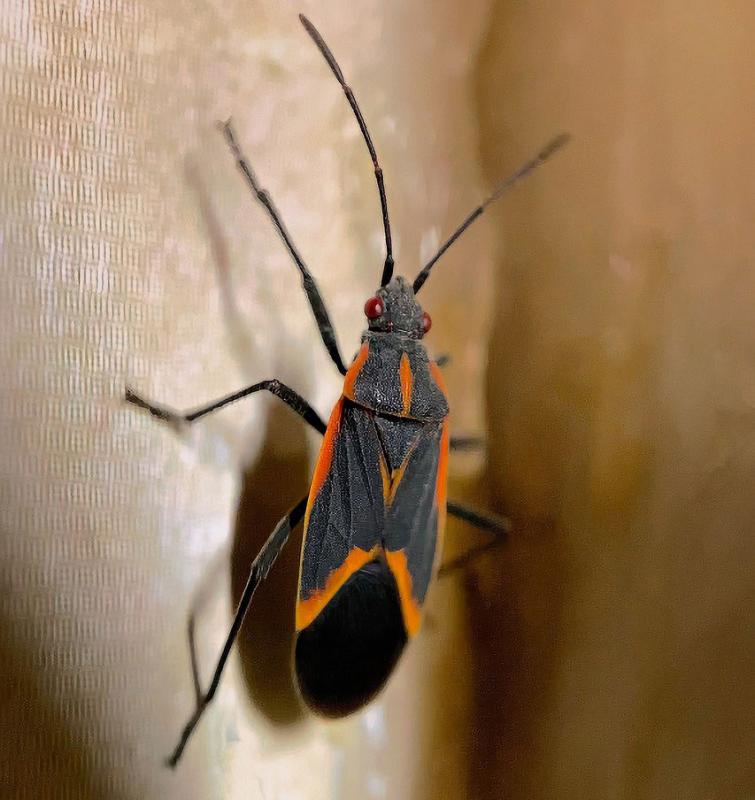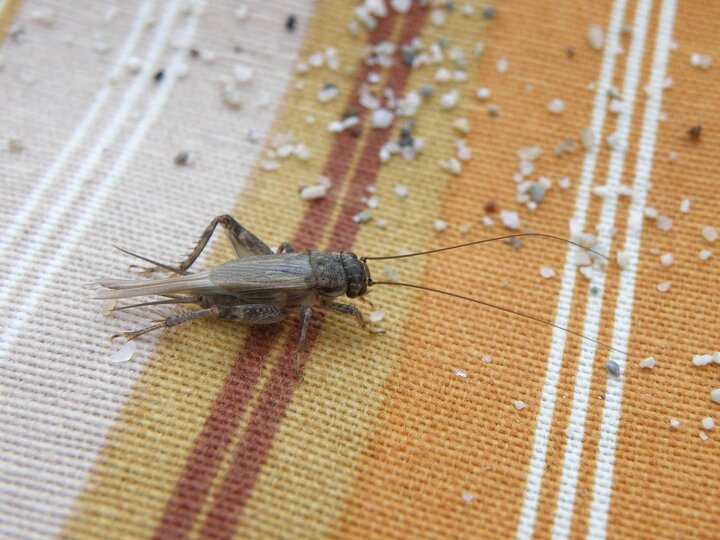Sarah Browning, Nebraska Extension Educator

Adult boxelder bugs are a common home invader in fall. Image from Pixabay.com.
Most pests reach their maximum population levels around August or September, and their favorite places to escape the heat of the summer sun or the oncoming winter cold are homes. Keeping fall pests out can be a challenge, but being prepared and properly treating infestations can make fall a much more pleasant time for homeowners.

Every fall, homeowners should systematically walk around their homes and look for any potential openings bugs can slip through. All cracks should be caulked and sealed. Check the seal around windows and replace any broken screens. Make sure door gaskets are firmly in place and that all other openings are sealed. Also check plumbing fixtures like water spigots for potential entryways into homes.
Homeowners who are anticipating a ground pest problem also can apply a perimeter spray. A number of insecticide products are available at garden centers and superstores, but make sure they are labeled for outside use. Spray up the house walls for 3 to 4 feet and out from the house for 3 to 5 feet. This will establish a barrier that kills bugs.
The second type of fall invaders enter homes in the air: house flies, cluster flies, yellow jackets, fruit flies, boxelder bugs, miller moths and mosquitoes. Unlike ground invaders, these airborne pests are generally not affected by foundation sprays. Because of this it is even more important to seal and caulk all cracks and openings. Many of these pests are also highly attracted to outdoor lights, such as porch lights, and enter homes when nearby doors are open. Turning off outdoor lights when they are not in use not only saves energy but helps keeps pests out of homes.

If bugs do get inside a home, the first step should be to set out sticky traps. Not only will this remove many of these unwanted guests, but it will help monitor which pests are inside. If any unidentifiable spiders are captured in sticky traps, take them to a garden center or local extension office for positive identification to ensure they are not the poisonous brown recluse.
For more serious problems, indoor-use aerosol sprays are available. If the infestation is severe, it is always best to hire a professional pest control operator. However, there is no need to call pest control at the sight of a single cricket or centipede. Sticky traps, along with the old-fashioned strategies of sucking bugs up in a vacuum cleaner or picking them up in a tissue, can usually get the job done without chemical sprays.
When using sprays, always be sure to follow label directions. Chemicals are only effective and safe, for humans and pets, when used according to their directions. Source: Fred Baxendale, Ph.D., former University of Nebraska - Lincoln Extension Entomologist
All images from Pixabay.com
Search Our Archive
Associated Video
Basic Insect Identification
UNL Extension Education Specialist Tiffany Heng-Moss talks about common insects you might find in your home garden